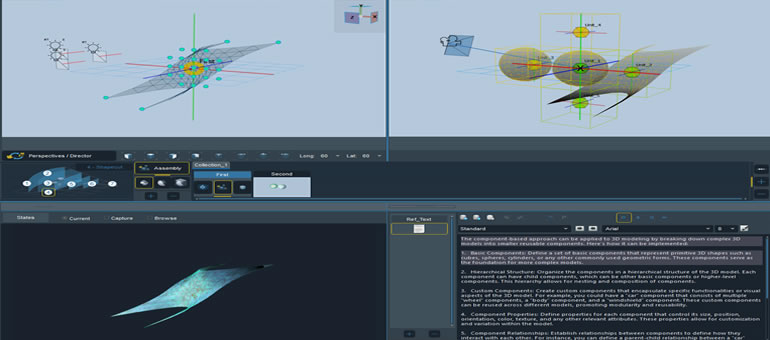
The component-based approach
The component-based approach can be applied to 3D modeling by breaking down complex 3D models into smaller reusable components. Here's how it can be implemented:
1. Basic Components: Define a set of basic components that represent primitive 3D shapes such as cubes, spheres, cylinders, or any other commonly used geometric forms. These components serve as the foundation for more complex models.
2. Hierarchical Structure: Organize the components in a hierarchical structure of the 3D model. Each component can have child components, which can be other basic components or higher-level components. This hierarchy allows for nesting and composition of components.
3. Custom Components: Create custom components that encapsulate specific functionalities or visual aspects of the 3D model. For example, you could have a "car" component that consists of multiple "wheel" components, a "body" component, and a "windshield" component. These custom components can be reused across different models, promoting modularity and reusability.
4. Component Properties: Define properties for each component that control its size, position, orientation, color, texture, and any other relevant attributes. These properties allow for customization and variation within the model.
5. Component Relationships: Establish relationships between components to define how they interact with each other. For instance, you can define a parent-child relationship between a "car" component and its constituent parts. These relationships can determine how components are positioned and oriented relative to each other.
6. Composition and Assembly: Assemble the 3D model by combining and arranging the components based on their hierarchical structure and relationships. You can use transformation matrices or other techniques to position, rotate, and scale the components within the model space.
7. Component Modification and Reusability: Since components are modular and self-contained, you can easily modify or replace individual components without affecting the entire model. This flexibility allows for rapid prototyping, iterative development, and reusability of components in different models.
8. Component Libraries: Create libraries or repositories of pre-built components that users can access and use in their 3D modeling projects. These libraries can contain a variety of components, ranging from basic shapes to complex objects, facilitating efficient and convenient modeling.
By applying the component-based approach to 3D modeling, you can achieve benefits such as reusability, maintainability, flexibility, and scalability. It allows for the efficient
creation, modification, and customization of 3D models by assembling and combining smaller, reusable components.
In VividGraph a palate of Visual elements is available – which is collection of standard meshes as sphere, cylinder etc. + also parametric mesh patches as on BSplines , Bezier and Thin Plate Spline.
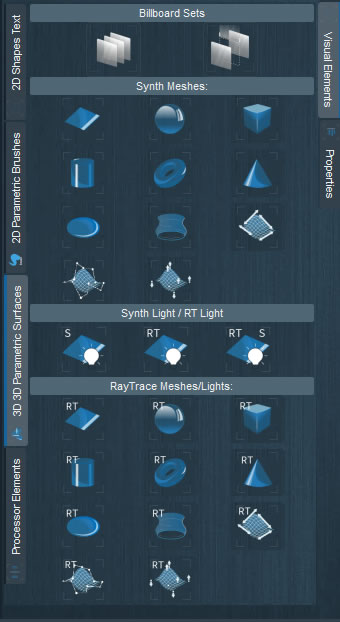
VividGraph 3D Parametric Surfaces
All Meshes are configurable and parametrized with properties which for now are available for the artist as property interface in future – they all be available as nodes for procedural interaction and programming.
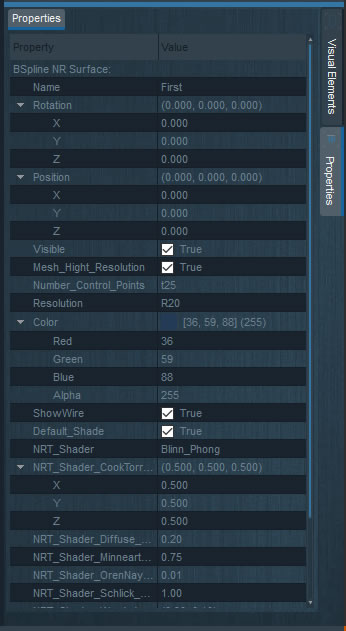
VividGraph 3D Parametric Surfaces Properties
Parametric Meshes could be customized on a 2D level (using the ShapeCut feature) and on the 3D level (using the modeling tools).
Parametric Meshes are grouped in Assemblies which are then structured in Units.
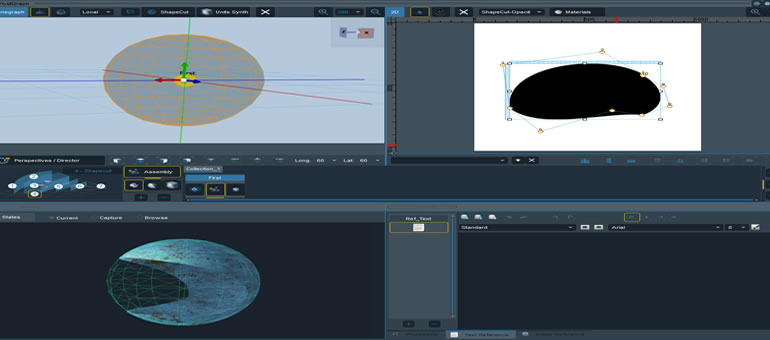
Assemblies are grouped in Arrangements -- and could be cloned. In proces of "clonining" --- parent-original information get embedded in the clonned assembly.
With this the authorship of the visualization elements stay intact.
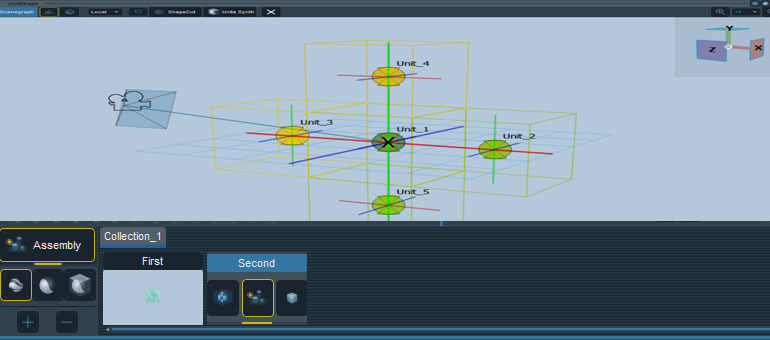
To be continued ...


